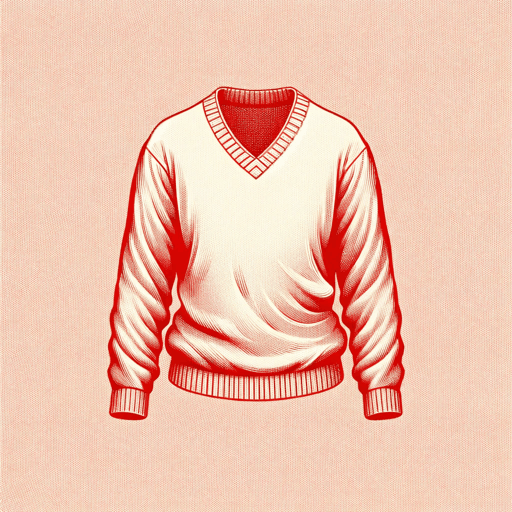19 pages • 38 minutes read
Joseph O. LegaspiThe Red Sweater
Fiction | Poem | Adult | Published in 2014A modern alternative to SparkNotes and CliffsNotes, SuperSummary offers high-quality Study Guides with detailed chapter summaries and analysis of major themes, characters, and more.
Summary and Study Guide
Overview
“The Red Sweater” was written by the Filipino American poet Joseph O. Legaspi. It was published in his debut collection Imago (2007) by CavenKerry Press as part of their initiative dedicated to showcasing new voices. Manuscripts for the series are selected from an open submissions call designed to open doors for unpublished poets without common hurdles like reading fees.
Legaspi prefaces his collection of contemporary poems with a definition of the titular word, imago. The first sense of the word is, “an insect in its sexually mature adult stage after metamorphosis” and the second, from psychology, is an “idealized mental image of the self or another person usually a parent, formed in childhood and persisting unconsciously into adulthood” (“Imago.” 2022. The American Heritage Dictionary of the English Language). It is a signal to readers that the book is concerned with themes of identity, heritage, memory, and transformation.
The poems in the first three sections center on Legaspi’s early childhood in the Philippines. The fourth section moves to the United States. It is in this final section—filled with status changes, labors, and emotional bonds—that “The Red Sweater” appears. Imago went on to win a Global Filipino Literary Award.
Poet Biography
Joseph O. Legaspi was born November 26, 1971, in the Philippines. President Ferdinand Marcos was in his second term of presidency, and in response to increasing protests and violent challenges to his power, Marcos imposed martial law from 1972 to 1981. It was a period of rampant government corruption and authoritarian rule. In 1983, opposition leader Benigno Aquino Jr. was killed in the Manila airport upon his return to the country. The assassination sparked massive waves of antigovernment protests and created lasting unrest. On July 30, 1984, when Legaspi was twelve, his family managed to leave the country. They immigrated to the United States and lived in Los Angeles to be with extended family.
Legaspi has said poetry, beginning with nursery rhymes and songs, has always been part of his life. He wrote poems in elementary school, but with the discovery of Robert Frost’s poetry in junior high, Legaspi began to write poems with intention.
He continued to study poetry in college and received a bachelor’s degree from Loyola Marymount University in California. In the mid 1990s, he moved to New York City and earned a Master of Fine Arts from New York University’s Creative Writing Program. He was a Fulbright scholar and twice received a poetry fellowship from the New York Foundation of the Arts.
In 2004, Legaspi and fellow poet Sarah Gambito founded Kundiman, a nonprofit organization committed to supporting Asian American literature. Kundiman is named after a classic form of song in the Philippines. Colonizers believed it was a traditional love song, but it was a political act expressing love for country. Kundiman’s mission is to create a “space where Asian Americans can explore, through art, the unique challenges that face the new and ever-changing diaspora” (Kundiman. 2022). The organization’s first workshop retreat for poets was held at the University of Virginia in 2004. It is now hosted by Fordham University and has been attended by over 250 fellows.
Since the debut of Imago (2007), Legaspi has published the collection Threshold (2017), and three chapbooks: Subways (2013), Aviary, Bestiary (2014), and Postcards (2019).
Legaspi teaches at New York University and Fordham University and works with the office that administers Pulitzer Prizes at Columbia University. He currently lives in Queens, New York with his husband.
Poem Text
Legaspi, Joseph O. “The Red Sweater.” 2007. Academy of American Poets.
Summary
The poem begins with the speaker putting on the titular red sweater. It is made from soft lamb’s wool and is “what everybody / in school is wearing” (Lines 1-2). He then says that the money it took for his mother to buy it is equivalent to twenty hours of her labor at a fast-food restaurant.
The sweater fits perfectly, “like a lover” (Line 6) and as the speaker touches the material, he imagines his mother standing over hot oil making french fries. He thinks about all she does in those twenty hours of work. She prepares ingredients. She waits on hundreds of customers. She assembles the orders and gets the food out to diners in less than two minutes apiece. He thinks about the heat and the toll the job takes on her body and spirit.
He says every strand in the sweater’s weave “becomes a question” (Line 17) about how much she does. Those twenty hours are compared links in a chain of days that stretch out in a routine beginning in the early morning. His mother wakes up and puts on a “polyester uniform” (Line 26) that always smells like the job—like “mashed beans and cooked ground beef” (Line 28).

